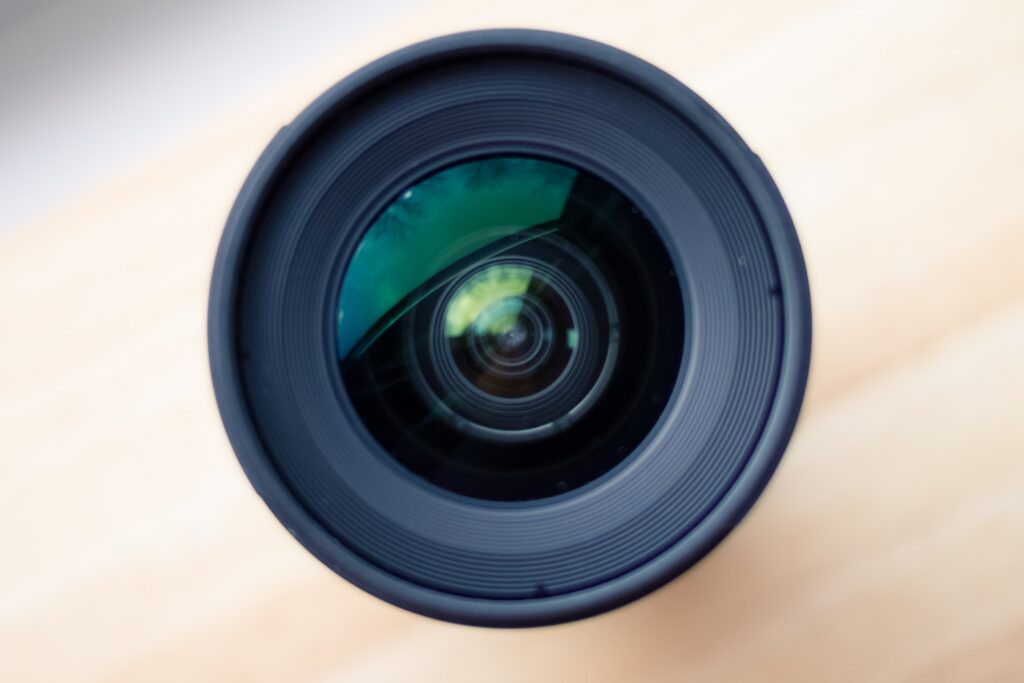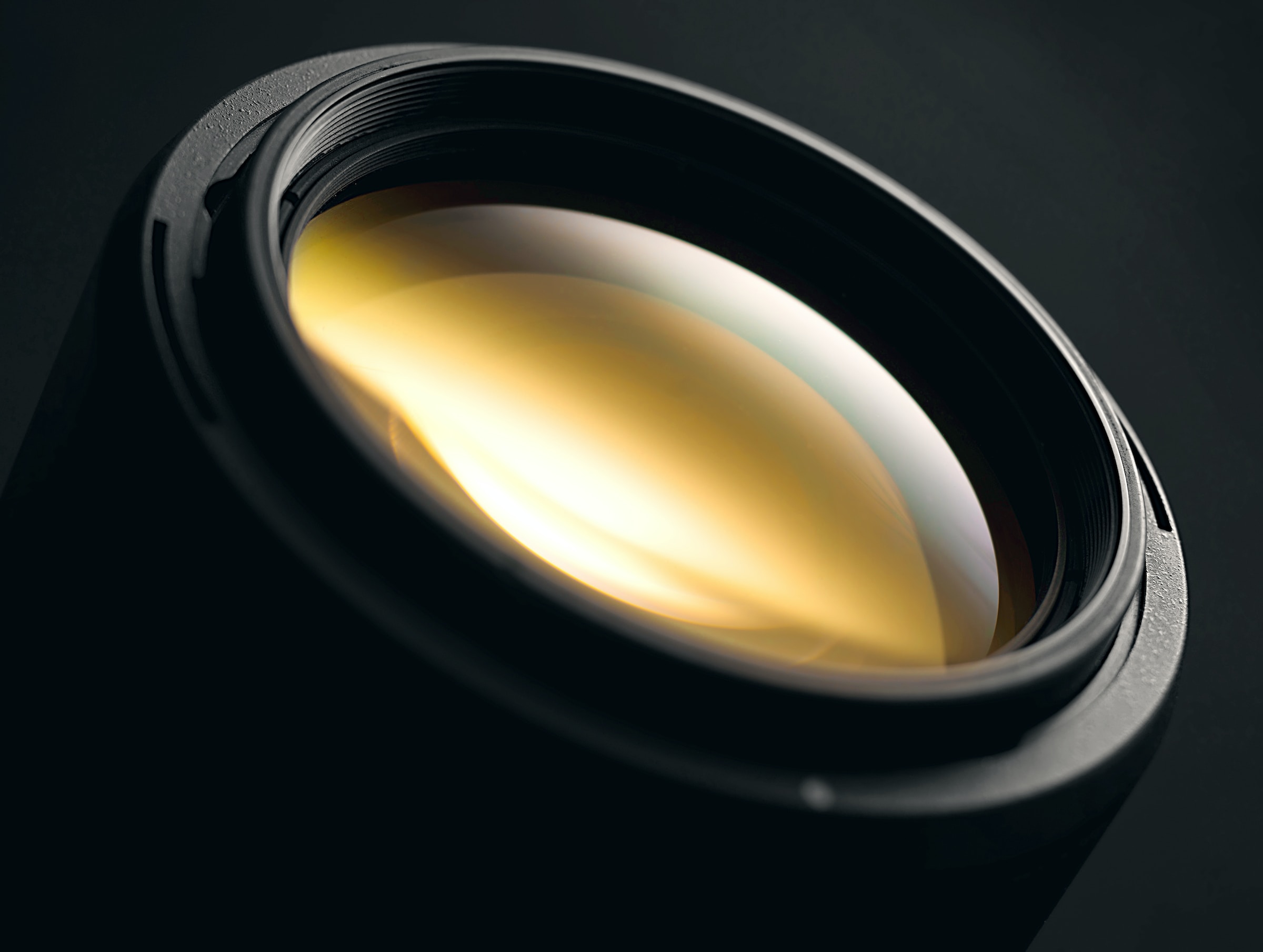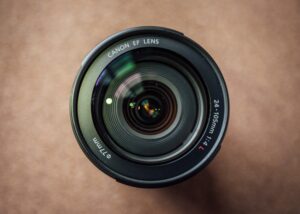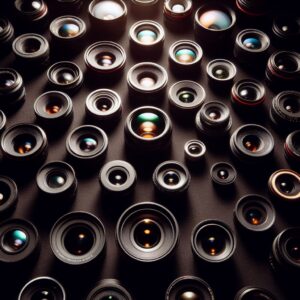Why are camera lenses round? The straightforward answer is that camera lenses are round because this shape excels at bending and focusing light onto film or an image sensor.
But don’t go just yet—there’s a lot more to uncover:
- The Science: Grasp what makes the round shape such an efficient player in bending light.
- Practical Advantages: Discover the reasons professional photographers prefer round lenses.
- Rectangular Outcome: Ever puzzled why your pictures turn out rectangular even though the lens is round? We have the answer.
| Key Takeaways | Details |
|---|---|
| Optical Efficiency | Round lenses excel in bending and focusing light. |
| Practical Advantages | Easier to manufacture and use; preferred by professionals. |
| Rectangular Pictures | Despite round lenses, pictures are usually rectangular due to the shape of the film or sensor. |
| Tradition & Aesthetics | Rectangular formats are a historical and aesthetic choice. |
Ready to dive into the details? Let’s get started.
P.S. If you’re brand new to the world of photography, you might also want to check out how do camera lenses work to complete your understanding of the subject.
Why Are Camera Lenses Round?
Utilizing Round Lenses for Focusing Light
So, let’s dig into the crux of the matter: Why exactly are camera lenses round? The key reason is optics—more specifically, how lenses bend and focus light.
The Round Shape and Light Convergence
Round lenses are basically champs at taking incoming light and bending it in a way that converges it perfectly onto your camera’s film or sensor.
The round shape doesn’t favor any particular direction, which means it treats all incoming light equally. This leads to a more consistent, higher-quality image.
Think of it as a well-trained athlete—nimble, balanced, and efficient in every move.
Other Shapes Just Don’t Cut It
You might wonder, “Do lenses have to be circular?”
Technically, you could have a lens of a different shape—square, hexagonal, or even triangular. But here’s the kicker: these shapes would result in uneven light absorption and focusing.
They might look funky, but they won’t do a great job in providing you with a crisp image. That’s because their corners and edges could introduce optical aberrations—basically, flaws in your image.
Did You Know?
Optical aberrations like chromatic aberration can seriously mess up your photo by introducing color fringes around objects. If you’ve ever seen those annoying purple or green halos around objects in some photos, you’ll understand why minimizing aberrations is important.
Practicality and Cost-Effectiveness
Not only are round lenses good for light convergence, but they’re also easier on the wallet and on the manufacturing process.
Compared to irregularly shaped lenses, circular ones are more straightforward to produce, cutting down on costs. And when you’re getting started in photography, cost-efficiency is always a plus.
Professionals often prefer round lenses, not only for their optical advantages but also for their practical benefits.
If you’re new to the world of lenses, you might also wonder about other factors like lens quality. To understand what to look for in a lens, check out how to check camera lens quality.
In summary, round lenses excel in light convergence, making them the go-to shape for anyone serious about photography. Their roundness helps in focusing light efficiently, ensuring that you get a clean, clear, and beautiful shot every single time.
How Lens Orientation Affects the Appearance of Captured Images
Now that we’ve established why camera lenses are round, let’s dig deeper into how this shape affects the quality of your photos, particularly when it comes to lens orientation.
The Downside of Rectangular Lenses
First, let’s talk about what could happen if lenses were, say, rectangular.
Picture this: you’re framing a landscape shot. With a rectangular lens, the light would not be absorbed evenly.
This is due to the angular corners and straight edges of the rectangle, which can create problems like vignetting—darkening at the corners of your image.
It’s like wearing glasses that darken at the edges; it messes up your view!
Did You Know?
Vignetting can be corrected in post-processing, but why start with a flawed image if you don’t have to?
The Consistency of Round Lenses
This is where round lenses shine. Because they’re round, they don’t have corners where light can get “trapped” or absorbed unevenly.
So whether you’re taking a landscape shot or a portrait, the lens doesn’t play favorites. The light is treated the same from all orientations, giving you consistent image quality.
Imagine a perfectly cooked pizza. Each slice tastes equally good because it’s cooked uniformly. That’s the kind of even-handed treatment that a round lens gives to light.
A Real-Life Example
Think about rotating your camera for portrait and landscape shots. With a round lens, it doesn’t matter how you turn your camera; the image quality remains consistent.
So, for beginners who are still learning the ropes, this consistency can be a real advantage.
And if you’re worried about lens care and durability, knowing that your lens shape is helping you out can be comforting. For tips on lens maintenance, you might find our article on how to store camera lenses properly useful.
By ensuring even light absorption from all angles, round lenses help maintain the integrity of your shots. This makes them not just a theoretical ideal but a practical necessity for producing high-quality photos.
The Practicality of Circular Lenses
Okay, so we’ve touched on the scientific and aesthetic reasons for why camera lenses are round, but what about the practical aspect?
As it turns out, the circle is not just a great shape for optics; it’s also a winner when it comes to practicality and cost-effectiveness.
Cost-Effective Manufacturing
The manufacturing process of circular lenses is simpler than you might think, especially compared to lenses of other shapes.
Because of their round design, these lenses can be more efficiently manufactured, which often results in a lower cost.
And let’s be real, who doesn’t like to save a little cash, especially when you’re a beginner and might not have a lot of money to throw around?
Quick Tip:
While it’s tempting to go for the cheapest lens you can find, remember that lens quality matters. For some helpful guidelines, check out our article on should I buy used camera lenses.
Professional Preference
Ask any seasoned photographer, and they’ll tell you that circular lenses are their go-to.
The reason? Aside from the optical benefits we’ve already discussed, round lenses just make life easier.
They fit seamlessly into lens mounts, they’re easier to clean, and their circular aperture allows for beautiful, round bokeh effects.
Speaking of bokeh, you might want to explore what makes a lens good for it in our article about what makes a lens good for bokeh.
The Ergonomic Factor
Last but not least, let’s talk ergonomics.
The rounded shape makes these lenses easier to handle, especially when you’re in the heat of a shooting session.
There’s no awkward angling or uncomfortable grip—just straightforward, ergonomic design that accommodates natural hand movements.
| Why Professionals Prefer Circular Lenses |
|---|
| Ease of Use: Quick to mount and dismount. |
| Quality Bokeh: Circular aperture allows for rounded bokeh. |
| Ergonomics: Comfortable to hold for extended periods. |
So, circular lenses are practical—not just for the science of photography but also for your wallet and your hands. They are the multi-talented athletes of the lens world, delivering not just in one department but excelling across the board.
Enhanced Stability with Circular Lenses
While we’re on the subject of practicality, there’s another essential point to touch on: stability.
For all the beginners out there, you know how crucial it is to keep your camera stable for that perfect shot. Circular lenses provide stability in ways that other shapes just can’t match.
Fit in Cylindrical Chambers
Firstly, round lenses are designed to fit snugly into cylindrical lens mounts or chambers. This isn’t just a design fluke; it’s a calculated choice.
The round lens in a cylindrical chamber makes for a stable, harmonious relationship. The lens doesn’t wobble or shift during focus adjustments or while capturing fast-moving subjects.
This ensures your shots are clear and crisp, free from the blurriness that can happen with less stable lens setups.
Fun Fact:
Ever wondered how do camera lenses focus? The stability offered by the round shape is a big part of that magic!
Comfortable Grip
Second, the ergonomics of a round lens are also geared towards stability.
The design naturally accommodates your hand’s grip, making it easier to hold the camera steady.
Unlike angular or irregular-shaped lenses that can be uncomfortable and thus harder to keep stable, a circular lens practically invites you to hold it firmly.
The more comfortable you are, the steadier your hand—so say goodbye to shaky shots!
| Key Features Enhancing Stability | Why It Matters |
|---|---|
| Cylindrical Chamber Fit | Ensures that the lens stays stable during focus adjustments, reducing blur. |
| Ergonomic Design | Makes for a comfortable and secure grip, aiding in steady photography. |
So, between the perfect chamber fit and the ergonomic design, circular lenses provide stability that’s second to none. They make your life easier, whether you’re snapping quick pictures of a soccer game or capturing the delicate details of a dew-covered spiderweb.

Why Rectangular Pictures Are Common in Photography
Now, let’s shift our focus (pun intended) from the lens to the end result: the picture.
Ever wondered, why, if the camera lens is round, are pictures square or rectangular?
Understanding the Function of Film and Image Sensors
Role of Round Lenses in Converging Light
Round lenses have a fantastic ability to gather and focus light. The purpose of any lens is to take incoming light and redirect it onto a film or image sensor.
With a round lens, this incoming light is converged into a round shape.
But here’s where things take a twist: the film or image sensor, where the light finally lands and creates a picture, is usually rectangular!
Important Note:
In photography, the film or image sensor acts like a canvas where the light paints a picture. The shape of this “canvas” is what determines the shape of your photograph.
Why Rectangular Film or Image Sensors?
So, you might ask, why not make the film or image sensor round to match the lens? Good question! Here’s why:
- Ease of Handling: Rectangular films are easier to handle, store, and load into the camera compared to circular ones.
- Maximizes Usage: Rectangular sensors make better use of the space within the camera body.
- Standardization: Historically, photographs and even paintings often used rectangular frames, and this format has been standardized over time.
| Film/Sensor Component | Shape | Why This Shape? |
|---|---|---|
| Film or Image Sensor | Rectangular | Easier to handle, maximizes usage, standardized |
While the lens does its job in a circle, the film or image sensor captures as much of this light as possible in its rectangular shape.
This explains why your photos come out as squares or rectangles, not circles.
So, while the shape of the lens and the shape of the photo may seem at odds, they actually work in perfect harmony. The lens focuses the light, and the film or sensor captures it, each doing their job in the most effective shape possible.
The Ease of Handling Rectangular Film
Simplicity of Loading and Working with Rectangular Film
So why did we land on rectangular film and not round or square? Ease of use is one of the key factors.
Just imagine having to perfectly align a circular film inside a camera; it sounds like a tedious task, doesn’t it?
Rectangular film, on the other hand, is a piece of cake to load. You simply slide it in, and it fits securely without requiring precise alignment.
- Less Waste: With rectangular film, you’re making the most out of each sheet. There’s less wasted space around the edges, which means you’re getting more bang for your buck.
- Easier to Store: Storing rectangular film is a no-brainer. They stack neatly and can be filed away without any fuss.
Historical Preference for Rectangular Frames
Ever noticed how most artworks, like paintings and photographs in galleries, are also in rectangular frames? This is no coincidence.
Historical preference has a role here. Since the early days of art and photography, the rectangular shape has been the go-to standard.
Why? Because rectangles are excellent at mimicking the natural field of view of our eyes, making the viewing experience more authentic.
| Aspect | Advantage of Rectangular Shape |
|---|---|
| Ease of Loading | Simple to insert, less precise alignment required |
| Waste Management | Maximizes useable area, less wasted space |
| Storage Simplicity | Easier to stack and store |
| Historical Standard | Mimics human field of view, universally accepted |
So, the next time you slide that rectangular film into your camera, you’ll appreciate how its shape makes your life easier while also fitting into a longstanding tradition in art and photography.
The Aesthetic Appeal of Rectangular Photographs
The Pitfalls of Round Images
You might be wondering: Why aren’t the pictures round like the lens? Great question!
In a hypothetical world where your photos come out as circles, you’d encounter some significant drawbacks.
One primary concern is image quality at the edges. Due to optical properties like vignetting, the edges of a circular image would be darker and less clear than the center.
This means you’d lose quality where you don’t want to—right at the edges of your masterpiece.
Note: Vignetting is a reduction of an image’s brightness or saturation at the periphery. In simple terms, the corners get dark.
Quality Retention with Rectangular Format
Rectangular pictures maintain consistent image quality from corner to corner.
This is a massive benefit because it lets you use the entire frame to compose your shots, without worrying about distorted or darkened edges.
- No Vignetting: Since the rectangle fits within the circle of the lens, the corners are far less likely to suffer from vignetting.
- Full-Frame Composition: You can use the entire rectangle to compose your shot, giving you more creative freedom.
Mimicking Human Vision
Here’s a fun fact: The rectangle closely mirrors the natural field of view of the human eye.
Ever noticed how you naturally “frame” things in a sort of rectangular shape when you’re looking around? This is because the human eye is more sensitive to detail in the area directly in front of us and less so at the peripheries, much like a rectangle.
| Image Format | Pros | Cons |
|---|---|---|
| Circular | Novelty | Edge quality issues, vignetting |
| Rectangular | Consistent quality, mimics human vision | None significant |
Rectangular photographs not only maintain a consistent image quality but also feel more “natural” to us because they align well with how we see the world. This makes them the go-to shape in photography, both for practical and aesthetic reasons.
The Tradition of Maintaining Rectangular Photo Formats
The Artistic Heritage of Rectangles
You might not realize it, but the preference for rectangular formats has deep roots in artistic tradition. Long before photography was even a thing, painters favored rectangular canvases.
Why? Because it offers a balanced field to portray both landscapes and portraits.
This historical preference naturally transitioned into photography, further cementing the rectangle as the go-to shape for visual representation.
Fun Fact: Even in digital screens, like your smartphones and TVs, rectangles dominate. Ever wondered why? It’s all tied back to these artistic traditions!
The Space and Attention Advantage
The rectangular format isn’t just a historical accident; it has practical benefits too. For one, rectangles offer more space for composition.
Think about it: A rectangle allows you to fit in more elements either horizontally or vertically, giving you greater artistic freedom.
- Leading Lines: The elongated shape of a rectangle allows for stronger leading lines, guiding the viewer’s eyes through the photograph.
- Framing: The corners of a rectangle can serve as natural frames, emphasizing the subject matter.
| Shape | Artistic Advantage | Practical Benefit |
|---|---|---|
| Circle | Unconventional | Limited space |
| Rectangle | Versatile, traditional | More space, natural eye guidance |
If you’re interested in composition techniques, you might want to learn about what camera lens do I need to make the most out of your rectangular frame.
In essence, the rectangular format isn’t just a fluke or a modern-day preference. It has been embraced and perpetuated over the years because it offers a balanced and flexible canvas for both practical and artistic reasons.
Ease of Cutting Rectangular Pictures
The Practicality of Square Corners
You might not think about it, but the shape of a photograph matters when it comes to post-processing too.
Imagine having to cut a perfectly round photo from a piece of film or paper. It’s difficult, impractical, and let’s be honest—frustrating!
On the other hand, rectangular pictures are straightforward to cut, mount, and frame. No wonder photo stores love them!
- Ease of Cutting: Squares and rectangles are simple shapes to cut, even manually. Just a few straight lines and you’re done.
- Mounting & Framing: Finding a frame for a rectangular picture is a breeze. Plus, they fit neatly into albums.
Remember: While digital photography avoids the cutting issue, the ease of managing rectangular shapes extends to digital file storage and editing software as well.
| Shape | Ease of Cutting | Ease of Framing |
|---|---|---|
| Circle | Difficult | Limited Options |
| Rectangle | Easy | Abundant Options |
Customization and Editing
After capturing your perfect shot, editing is often the next step. Rectangular pictures are way easier to manipulate in editing software.
Crop them, rotate them, you name it. The rectangular shape makes these tasks straightforward.
Final Thoughts
So, why are camera lenses round but photos square? Let’s break it down:
- Round Lenses: Optimal for converging light efficiently, capturing more details, and being cost-effective.
- Rectangular Pictures: Born out of practicality, tradition, and a quest for quality.
Photography might seem filled with contradictions at first, but as you dive deeper, you’ll see that each aspect, from the shape of the lens to the format of the picture, has been fine-tuned for a reason.
Whether you’re contemplating zoom lenses vs. prime lenses or wondering how to make the most of your kit lens, remember that the foundational principles of photography—like the round lens and rectangular frame—are pretty much set in stone. And for good reason!








